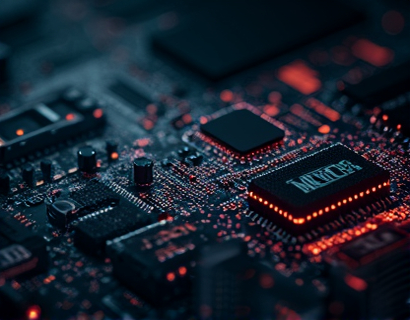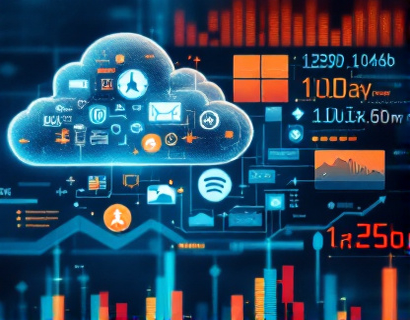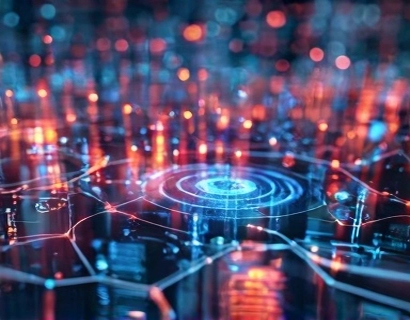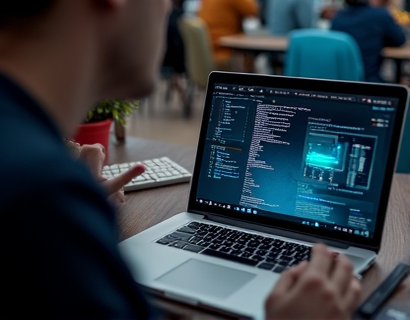Decentralized Productivity Supercharged: Harnessing AI and Crypto for Next-Gen App Ecosystems and Enhanced User Experience
The digital landscape is evolving at an unprecedented pace, driven by the convergence of artificial intelligence (AI) and cryptocurrency. This fusion is not just a trend; it represents a fundamental shift in how we approach productivity and user experience. As we delve into this transformative era, we will explore how decentralized tools powered by AI and crypto are reshaping the way we work, communicate, and interact with technology.
The Rise of Decentralization
Decentralization has emerged as a powerful paradigm in the digital world, offering users greater control, transparency, and security. Unlike traditional centralized systems, where a single entity holds power over data and processes, decentralized systems distribute authority across a network. This shift is particularly significant in the context of productivity applications, where users seek tools that empower them rather than restrict them.
Decentralized applications (dApps) leverage blockchain technology to create a trustless environment where users can interact without intermediaries. This not only enhances security but also fosters innovation, as developers can create applications that are resistant to censorship and manipulation. The integration of AI into these dApps further amplifies their potential, enabling smarter, more efficient solutions that adapt to user needs.
AI: The Catalyst for Enhanced Productivity
Artificial intelligence is revolutionizing productivity by automating tasks, providing insights, and enhancing decision-making processes. In a decentralized ecosystem, AI can analyze vast amounts of data from various sources, offering personalized recommendations and streamlining workflows. This capability is particularly valuable for professionals who need to manage multiple tasks and projects simultaneously.
For instance, AI-driven tools can help users prioritize their tasks based on deadlines, importance, and personal preferences. By analyzing user behavior and patterns, these tools can suggest optimal times for focused work, breaks, and collaboration. This level of personalization not only boosts productivity but also enhances user satisfaction, as individuals feel more in control of their work environment.
Cryptocurrency: Enabling New Economic Models
Cryptocurrency plays a crucial role in the decentralized productivity landscape by enabling new economic models that reward users for their contributions. In traditional systems, users often provide value without receiving adequate compensation. However, with the advent of blockchain and cryptocurrency, users can be rewarded for their engagement, whether through content creation, data sharing, or participation in decentralized networks.
This shift not only incentivizes user participation but also fosters a sense of community and collaboration. For example, decentralized platforms can implement token-based economies where users earn tokens for completing tasks or contributing to the ecosystem. These tokens can then be used to access premium features, participate in governance, or trade on cryptocurrency exchanges, creating a vibrant economic environment that benefits all participants.
Transforming User Experience with Decentralized Tools
The integration of AI and cryptocurrency into decentralized applications is transforming user experience in profound ways. One of the most significant benefits is the enhanced security and privacy that decentralized systems offer. Users can maintain control over their data, deciding what to share and with whom. This level of autonomy is particularly appealing in an age where data breaches and privacy concerns are rampant.
Moreover, decentralized applications often provide a more seamless user experience by eliminating intermediaries. Users can interact directly with the application, reducing friction and enhancing efficiency. For instance, in a decentralized project management tool, team members can collaborate in real-time without the need for a central server, ensuring that everyone has access to the latest information and updates.
Case Studies: Real-World Applications of AI and Crypto
To illustrate the potential of decentralized productivity tools, let’s explore some real-world applications that are harnessing AI and cryptocurrency to enhance user experience.
1. Decentralized Task Management
Imagine a task management application that utilizes AI to analyze user behavior and suggest optimal workflows. Users can create tasks, set deadlines, and receive personalized recommendations on how to prioritize their work. By integrating cryptocurrency, the application can reward users with tokens for completing tasks on time, fostering a sense of accountability and motivation.
2. Collaborative Content Creation
Decentralized platforms for content creation allow users to collaborate on projects without the constraints of traditional publishing models. AI can assist in generating content ideas, optimizing for SEO, and even editing drafts. Users can earn cryptocurrency for their contributions, creating a fairer distribution of rewards based on the value they provide.
3. Decentralized Learning Platforms
Education is another area ripe for disruption through decentralized tools. AI-driven learning platforms can personalize educational content based on individual learning styles and progress. By incorporating cryptocurrency, these platforms can incentivize learners to complete courses and engage with content, creating a more dynamic and rewarding educational experience.
The Future of Decentralized Productivity
As we look to the future, the potential for decentralized productivity tools powered by AI and cryptocurrency is immense. The ongoing development of blockchain technology, coupled with advancements in AI, will continue to drive innovation in this space. We can expect to see more sophisticated applications that not only enhance productivity but also prioritize user experience and engagement.
Furthermore, as more individuals and organizations recognize the benefits of decentralization, we will likely see a shift in how work is structured. Traditional hierarchies may give way to more collaborative, decentralized models that empower individuals to take ownership of their work and contribute to shared goals.
Challenges and Considerations
While the potential of decentralized productivity tools is exciting, there are also challenges that must be addressed. One of the primary concerns is the scalability of decentralized systems. As user adoption increases, ensuring that these systems can handle large volumes of transactions and data will be crucial.
Additionally, the integration of AI into decentralized applications raises questions about data privacy and security. Developers must ensure that user data is protected while still allowing AI algorithms to function effectively. Striking the right balance between personalization and privacy will be essential for building trust with users.
Conclusion
The convergence of AI and cryptocurrency is ushering in a new era of decentralized productivity tools that have the potential to transform user experience. By harnessing the power of these technologies, we can create applications that empower individuals, enhance collaboration, and foster innovation. As we continue to explore the possibilities of decentralized ecosystems, it is essential to remain mindful of the challenges and work towards solutions that prioritize user needs and security.
In this rapidly evolving digital landscape, embracing the next wave of innovation will be key for tech enthusiasts, professionals, and everyday users alike. The future of productivity is decentralized, and by harnessing AI and cryptocurrency, we can unlock new levels of efficiency, creativity, and collaboration.










































